Future Technology

What is the future of e-sports and its integration with technology ?
E-sports, or electronic sports, have seen a meteoric rise in popularity over the past decade. As technology continues to evolve at a rapid pace, the future of e-sports looks brighter than ever before. In this article, we will explore the potential integration of e-sports with technology and what it means for the future of competitive gaming.

How does space exploration inspire future generations ?
Space exploration has been a source of inspiration for future generations in various ways, including igniting curiosity and wonder, advancing scientific knowledge, promoting international collaboration, encouraging careers in STEM, inspiring creativity and art, and nurturing resilience and perseverance. As we look toward the future, space exploration will continue to capture the imagination of young people around the world and spur them on to become the next generation of explorers, scientists, and engineers.

What is the future of blockchain beyond cryptocurrency ?
This article explores the potential applications of blockchain technology beyond cryptocurrency, highlighting key areas such as decentralized finance (DeFi), supply chain management, healthcare, government services, and intellectual property rights management. It emphasizes how blockchain can improve transparency, security, efficiency, and accessibility in these sectors through features like peer-to-peer transactions, smart contracts, tokenization, traceability, interoperability, data privacy, identity management, public records storage, voting systems, proof of ownership, streamlined licensing, and fraud prevention. The article concludes by stating that the future prospects of blockchain technology are vast and promising, offering numerous opportunities for innovation and transformation across various industries.

How can wind energy contribute to a sustainable future ?
Wind energy is a renewable and sustainable source of power that can significantly contribute to a more sustainable future. It offers several benefits including reducing carbon emissions, stimulating economic growth, enhancing energy security, driving technological innovation, compatible land use, community engagement, scalability, improving health impacts, and promoting education and awareness. By incorporating wind energy into our energy mix, we can create a cleaner, healthier, and more sustainable environment for future generations.

What is the impact of climate decisions on future generations ?
This text discusses the far-reaching impacts of climate decisions on future generations, including environmental issues such as rising sea levels and loss of biodiversity, economic shifts related to job markets and infrastructure costs, and societal effects like health concerns and political stability. It emphasizes the importance of taking immediate action to mitigate these impacts and create a sustainable future for all.

What is the future of carbon credit systems ?
The future of carbon credit systems is uncertain and depends on various factors such as policy decisions, technological advancements, public opinion, and market dynamics. Governments play a crucial role in shaping the future of these systems through regulations and enforcement. Technological innovations can both increase and decrease the value of carbon credits. Public opinion can drive demand for carbon credits, while market dynamics will shape the industry's evolution. Despite challenges, there are opportunities for growth and improvement in this important area of environmental protection.
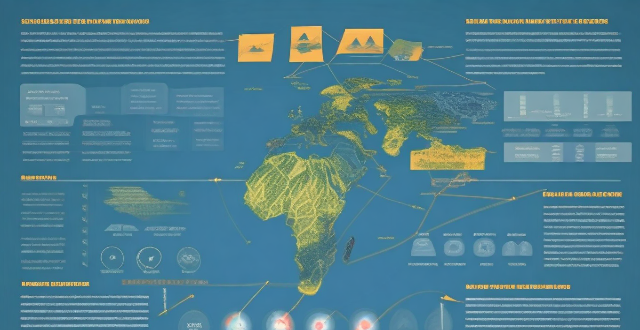
How does climate change influence the future of remote work and virtual employment ?
The article discusses the impact of climate change on the future of remote work and virtual employment. It states that rising temperatures, extreme weather events, and environmental concerns are driving factors for the shift towards remote work arrangements. As a result, there is an increasing demand for remote work options, technology advancements to support virtual employment, and a changing work culture that focuses on results rather than physical presence. The article concludes that embracing these changes can lead to a sustainable and efficient future of work.
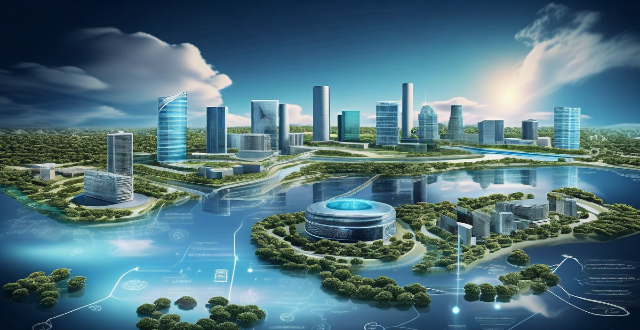
What is the future of Climate-Smart Technology ?
The future of climate-smart technology is expected to be transformative, offering numerous ways to mitigate climate change and adapt to its effects. Key areas of development include renewable energy, energy efficiency, carbon capture and storage, water management, and agriculture. Emerging technologies such as artificial intelligence, blockchain, and the Internet of Things also have significant potential in this field. However, challenges such as cost, infrastructure, regulation, and public acceptance must be addressed to ensure widespread adoption and effectiveness.

What is the future outlook for private equity ?
Private equity (PE) is a dynamic sector of the financial industry that involves investing in or acquiring companies, typically with the aim of improving their operations and selling them at a profit within a few years. The future outlook for private equity is influenced by various factors such as economic conditions, technological advancements, regulatory changes, and market trends. Here's a detailed analysis of what the future might hold for private equity: Economic Influences: Global Economic Growth, Interest Rates, Market Volatility Technological Advancements: Digitization, Artificial Intelligence and Machine Learning, Blockchain Regulatory Changes: Stricter Regulations, Tax Laws Market Trends: ESG Investing, Diversification, Exit Strategies Industry Evolution: Consolidation, Secondary Markets, Direct Investments Challenges and Opportunities: Competition, Talent Retention, Innovation In conclusion, the future of private equity looks promising but not without its challenges. The industry is set to evolve with changing economic conditions, technological advancements, regulatory shifts, and market trends. PE firms that adapt and innovate will be well-positioned to thrive in this dynamic environment.
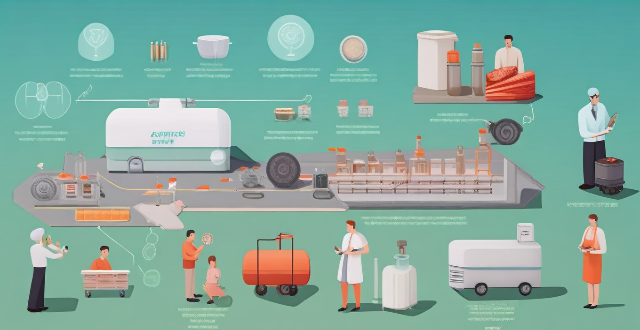
What role does technology play in climate adaptation ?
The article discusses the various ways in which technology can aid in climate adaptation. It mentions data collection and analysis, modeling and prediction, infrastructure development, agriculture and food security, water management, and health and well-being as key areas where technology is used. The article concludes that technology plays a crucial role in understanding and mitigating the challenges posed by climate change.

What is the impact of technology on future employment opportunities ?
The Impact of Technology on Future Employment Opportunities Technology has had a significant impact on the job market, and this trend is expected to continue in the future. Here are some ways technology will affect employment opportunities: - Increased Automation: As technology advances, many jobs that were previously done by humans are now being automated. This means that there will be fewer jobs available for people in industries such as manufacturing, transportation, and customer service. However, new jobs will also be created in areas such as robotics, artificial intelligence, and data analysis. - Remote Work: The rise of technology has made it possible for people to work from anywhere in the world. This has led to an increase in remote work opportunities, which can be beneficial for both employers and employees. Employers can save money on office space and other expenses, while employees can enjoy more flexibility and a better work-life balance. - Digital Skills: As technology continues to evolve, there will be a greater demand for workers with digital skills. This includes not only programming and software development but also skills related to cybersecurity, digital marketing, and social media management. Those who have these skills will likely have an advantage in the job market. - New Industries: Technology is constantly creating new industries and job opportunities. For example, the rise of e-commerce has led to the creation of new jobs in online sales, digital marketing, and logistics. Similarly, the growth of renewable energy sources has created new jobs in solar panel installation and maintenance. In conclusion, technology will have both positive and negative effects on future employment opportunities. While some jobs may become automated or obsolete, new jobs will also be created in industries that didn't exist before. It's important for workers to stay up-to-date with changing technology trends and develop the necessary skills to remain competitive in the job market.

How has technology revolutionized the healthcare industry ?
The healthcare industry has been transformed by advancements in technology, including electronic health records, telemedicine, wearable devices, medical imaging tools, and robotic surgery. These innovations have improved efficiency, expanded access to care, and enhanced patient outcomes. As technology continues to evolve, it will play an increasingly important role in shaping the future of healthcare.

What are the latest trends in basketball shoe design and technology ?
The latest trends in basketball shoe design and technology include the use of lightweight materials, energy return systems, customization options, sustainability initiatives, and smart technology integration. These advancements aim to enhance performance, style, and environmental consciousness while providing players with personalized footwear choices.
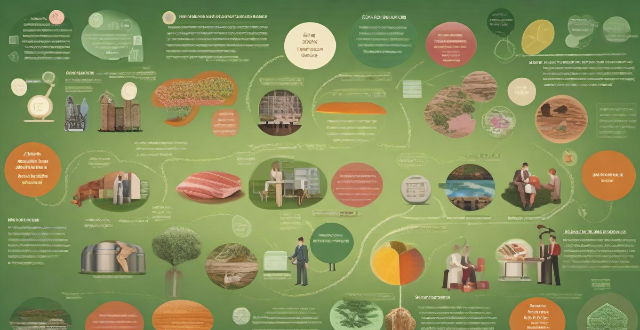
What policies can be implemented to reduce the number of climate refugees in the future ?
Policies to reduce the number of climate refugees in the future include investment in renewable energy, afforestation and reforestation, sustainable agriculture practices, coastal protection measures, and international cooperation and funding. These policies aim to mitigate the effects of climate change and prevent displacement of people due to climate change-related events.

How will technology impact the design and functionality of future cities ?
Technology will have a significant impact on future city design and functionality, including the creation of energy-efficient and sustainable smart buildings, the adoption of autonomous vehicles to reduce congestion and redesign infrastructure, and the use of connectivity and data analytics for real-time information sharing and predictive maintenance. These changes will lead to more efficient, sustainable, and connected communities, but it is important to consider the long-term implications and work towards creating livable and equitable cities for all residents.

How do you use historical data to make predictions about future stock market performance ?
Predicting the stock market's future performance is a complex task that involves analyzing various factors. One common method used by investors and analysts is to study historical data, which can help make informed predictions about future market performance. To use historical data for stock market predictions, it is essential to identify key metrics such as price movements, volume, earnings reports, and economic indicators. Once these metrics are identified, analyze the historical data to identify trends and patterns through technical analysis techniques like moving averages, support and resistance levels, and candlestick patterns. Additionally, consider using fundamental analysis to evaluate underlying factors that drive stock prices, such as financial statements, industry trends, and macroeconomic factors. With the advancement of technology, machine learning and AI models have become popular tools for predicting stock market performance, including neural networks, reinforcement learning, and deep learning. Combining different methods of analysis can lead to more accurate predictions about future stock market performance. However, it's important to remember that no method is foolproof, and there will always be an element of risk involved in investing in the stock market.

What are the most promising job sectors for the future ?
The most promising job sectors for the future include artificial intelligence and machine learning, renewable energy, healthcare technology, cybersecurity, and automation and robotics. These fields offer a wide range of opportunities for individuals with diverse skills and backgrounds. Data scientists, machine learning engineers, AI researchers, solar installers, wind turbine technicians, battery engineers, telemedicine specialists, medical device engineers, health information technicians, ethical hackers, cybersecurity analysts, risk management specialists, robotics engineers, automation specialists, and drone pilots are just some of the roles that will be in high demand as technology continues to advance. Pursuing careers in these areas can position individuals for success in an ever-changing job market.

Can flying cars become a reality in the near future ?
Flying cars have long been a staple of science fiction and futuristic visions, but can they become a reality in the near future? The answer is not straightforward, as it involves several complex factors. Here are some key points to consider: Technical Challenges: - Aerodynamics: Designing a vehicle that can efficiently take off, fly, and land requires careful consideration of aerodynamic principles. Balancing the weight of the vehicle while ensuring stability during flight is crucial. - Power Source: Finding an energy-efficient power source for sustained flight is essential. Advances in battery technology could potentially enable longer flight times. - Safety: Addressing potential crash risks and developing safety protocols is vital. Advanced navigation systems are needed to avoid mid-air collisions and ensure accurate landings. Regulatory Challenges: - Certification Standards: Meeting certification standards for airworthiness is a significant hurdle. Determining whether pilots are required or if autonomous systems can be used is also a challenge. - Airspace Management: Integrating flying cars into existing air traffic control systems poses challenges. Addressing privacy concerns related to surveillance and data collection is also important. Economic Challenges: - Cost of Production: The high costs of research and development may make flying cars initially expensive. Scaling production to make flying cars more affordable over time is also a challenge. - Market Demand: Assessing whether there is enough demand from consumers who are willing to pay for this new technology is important. Investing in infrastructure such as charging stations and landing pads to support widespread adoption is also necessary. Social and Environmental Impact: - Noise Pollution: Reducing noise pollution caused by flying cars to minimize disturbance to residents below is a challenge. - Environmental Impact: Ensuring that flying cars have a lower environmental impact than traditional vehicles is important. Promoting sustainable practices in the production and operation of flying cars is also crucial. In conclusion, while flying cars face numerous challenges on technical, regulatory, economic, social, and environmental fronts, advancements in technology and changing societal attitudes could make them a reality in the near future. However, it will likely require significant investments in research and development, as well as collaboration between governments, industries, and communities, to overcome these obstacles and bring flying cars to market successfully.
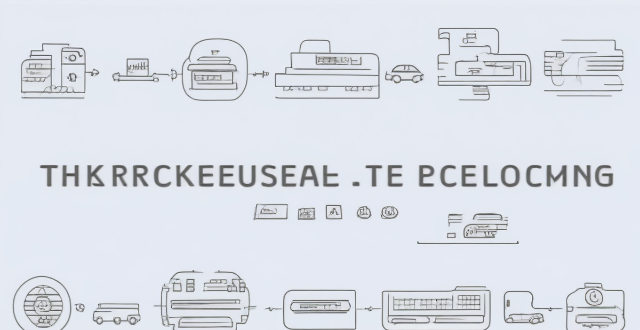
Is hyperloop technology a viable solution for future high-speed travel ?
The text discusses the concept of hyperloop technology, a proposed transportation system that uses electric propulsion, magnetic levitation, and vacuum tubes to move passengers or freight at high speeds. It explores the advantages of this technology, including its speed, efficiency, and reduced environmental impact. However, it also highlights challenges such as cost, safety, and regulation that need to be addressed before it can become a widespread reality. The text concludes that only time will tell if hyperloop technology will truly revolutionize the way we travel.

How can technology be used to promote vaccine equity ?
Technology can promote vaccine equity by improving accessibility, monitoring, and distribution. Digital awareness campaigns, telemedicine services, real-time data tracking, data analytics, automated logistics systems, and cold chain management are some of the ways technology can be used to achieve this goal. By leveraging technology, we can bridge the gap between the haves and the have-nots, making vaccines accessible to all sections of society.

Can we trust climate models for future predictions ?
Climate models are designed to predict future changes in the Earth's climate based on scientific principles and past observations. Trust in these models depends on factors such as their scientific foundation, data quality, model complexity, intercomparison, historical validation, uncertainty quantification, and continuous improvement. While no model can perfectly predict the future, climate models offer valuable insights into potential future scenarios based on current knowledge and understanding. However, it is important to recognize their limitations and uncertainties when interpreting their results.
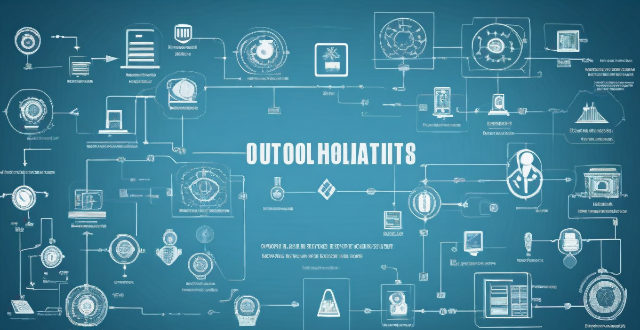
What are the potential benefits of using blockchain technology in the education sector ?
Blockchain technology can transform the education sector by providing immutable records, decentralized networks, enhanced collaboration through smart contracts, and improved communication. These benefits include maintaining accurate academic records, ensuring research data integrity, automating administrative tasks, and fostering teacher-student interaction. As the technology advances, it is expected to have a significant impact on the future of education.

In what ways can technology accelerate energy transition ?
Energy transition is the process of shifting from traditional, non-renewable energy sources to cleaner and more sustainable alternatives. Technology plays a pivotal role in this transition by improving efficiency, reducing costs, and enhancing the performance of renewable energy systems. Key areas where technology can make a difference include renewable energy production, energy storage, smart grids, energy efficiency, and carbon capture and utilization. Innovations in these areas promise a cleaner, more sustainable, and resilient energy future for all.

What role does government play in promoting green technology ?
The government plays a crucial role in promoting green technology. This is because the government has the power to create policies and regulations that can encourage the adoption of sustainable practices and technologies. Here are some ways in which the government can promote green technology: 1. Funding and Incentives 2. Regulations and Standards 3. Public Awareness Campaigns 4. Collaboration with Industry

What is the role of technology in shaping future trends in the entertainment industry ?
Technology is a driving force in the entertainment industry, shaping future trends through advancements like streaming services, virtual and augmented reality, AI, blockchain, IoT, and 5G networks. These innovations offer personalized content, immersive experiences, decentralized platforms, and seamless connectivity across devices.

How can technology be used to monitor and predict climate conflicts ?
Climate conflicts, exacerbated by competition for natural resources, have significant impacts. Technology is crucial in monitoring and predicting these conflicts through satellite imagery, data analytics, GIS, social media monitoring, mobile technology, and collaboration platforms. These tools help in early warning, predictive modeling, mapping disputes, sentiment analysis, citizen reporting, information dissemination, and multi-sector coordination.

What is Smart Grid Technology ?
Smart grid technology is a modernized electrical grid infrastructure that utilizes advanced communication, control, and automation technologies to improve the efficiency, reliability, and sustainability of electricity delivery. It integrates renewable energy sources, storage devices, and intelligent monitoring systems to optimize the distribution and consumption of electricity. The key features of smart grid technology include intelligent monitoring, distributed energy resources, demand response management, electric vehicle integration, cybersecurity, and automation. The benefits of smart grid technology are improved reliability, increased efficiency, enhanced sustainability, consumer empowerment, and economic advantages.

What role does technology play in modern finance and banking ?
Technology has revolutionized the finance and banking industry by enhancing efficiency, improving customer experience, and driving innovation. Automation, streamlined processes, and cost reduction have made financial services more efficient. Personalization, accessibility, and advanced cybersecurity measures have improved customer experiences. Fintech startups, blockchain technology, and cryptocurrencies are driving innovation in the industry. As technology continues to evolve, it will play an even greater role in shaping the future of finance and banking.

How has technology improved food safety monitoring and compliance ?
This article discusses how technology has played a crucial role in enhancing food safety measures. It covers traceability systems, sensor technology, data analytics, automation and machine learning, and blockchain technology. Traceability systems allow for the tracking of products from farm to table using barcodes, QR codes, and RFID tags. Sensors monitor various parameters that impact food safety, such as temperature, humidity, and chemical composition. Data analytics tools process vast amounts of collected data to identify patterns, trends, and potential risks. Automated systems reduce human error and increase efficiency in food processing plants, while machine learning algorithms enhance decision-making processes based on learned behaviors from past data. Blockchain offers a decentralized way to record transactions securely and transparently when applied to food supply chains. By leveraging these technological advancements, we can work towards a future where food safety concerns are minimized, benefiting both consumers and industry stakeholders alike.

What are the current advancements in interstellar exploration technology ?
The text discusses the current advancements in interstellar exploration technology. The main topics include the Breakthrough Starshot project, which aims to propel tiny spacecraft to Alpha Centauri using powerful lasers on Earth; warp drive technology that could allow faster-than-light travel by manipulating space-time; ion propulsion systems already used in deep space missions and capable of long-duration missions; and nuclear propulsion systems potentially offering higher speeds than chemical propulsion systems but with safety concerns. These technologies offer hope for humanity's future as an interstellar species.